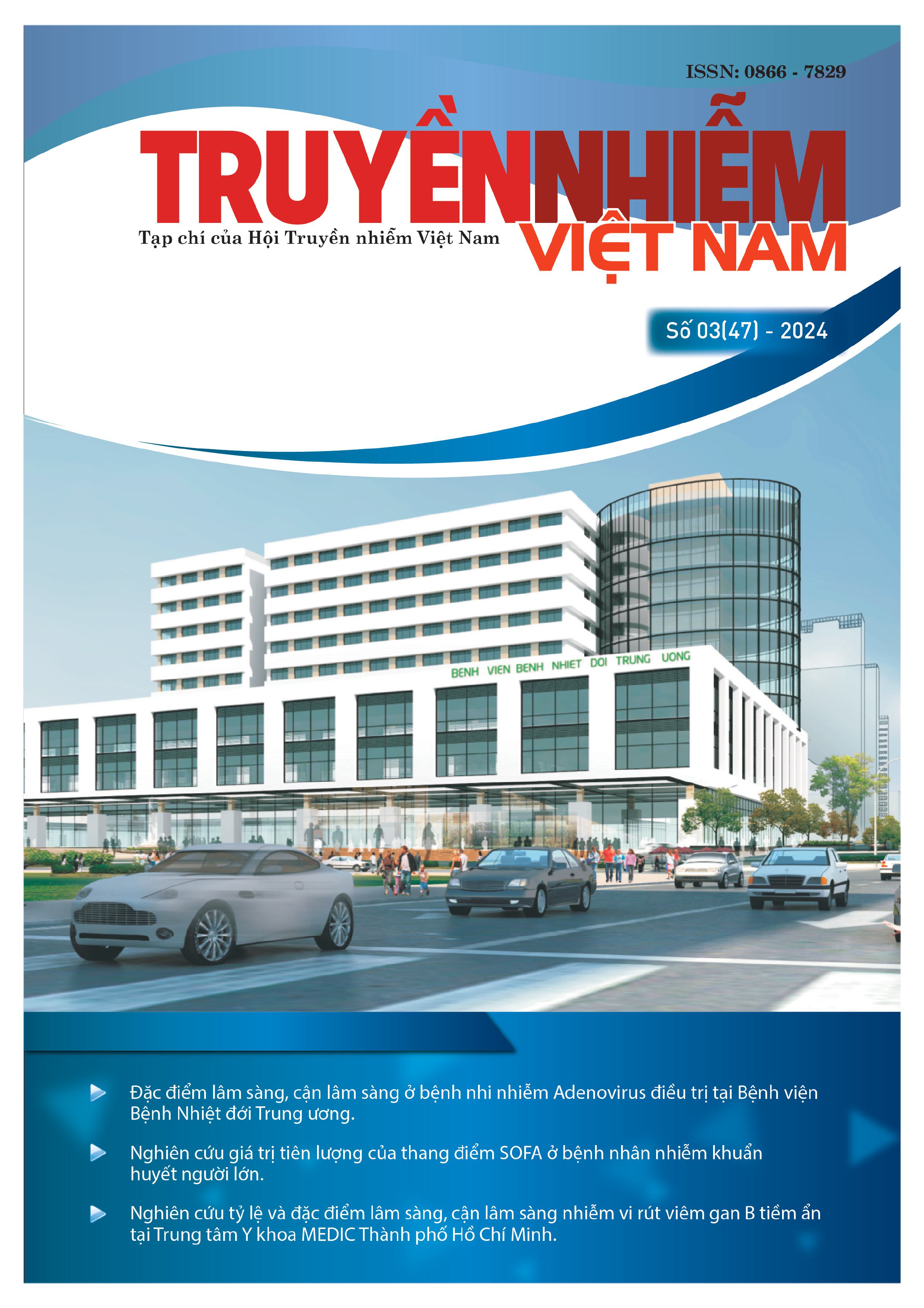APPLYING WHONET SOFTWARE TO MONITOR THE ANTIBIOTIC RESISTANCE STATUS OF COMMON BACTERIA AND BUILD THE EMPERIC ANTIBIOTICS REGIMEN AT THONG NHAT GENERAL HOSPITAL OF DONG NAI PROVINCE FROM 2020-2023
Main Article Content
Abstract
Introduction: Currently in many hospitals, the rate of appropriate initial antibiotic use is not high. Therefore, antibiogram plays a very important role in the treatment of infected patients. From the analyzed
data, it can be helpful to develop hospital procedures for the use of antibiotic prophylaxis in surgery or to guide empirical antibiotic treatment.
Objectives: Monitor the antibiotic resistance situation of some common bacteria to develop guidelines for antibiotic use at Thong Nhat Dong Nai General Hospital.
Subjects and method: All bacterial strains isolated at Thong Nhat Dong Nai General Hospital from July 1, 2020 - June 30, 2023. Synthesize reports on bacterial antibiotic resistance on WHONET software.
Results and conclusions: Cumulative antibiogram was constructed presented by bacterial group, clinical block and specimen groups. The positive culture rate was 26.98% of all cultured samples. The 5 most common infectious agents were Staphylococcus aureus (23.4%), Escherichia coli (18.6%), Klebsiella pneumonia (13.3%), Acinetobacter baumannii (11.8%), and Pseudomonas aeruginosa (10.4%), accounting for 77.5% of all isolates. 34.9% were diagnosed within 48 hours of admission. These were potentially hospital-related infections. Hospital-acquired infections had higher resistance rates than community-acquired infections to most of the tested antibiotics. For colistin, the 2 strains of Klebsiella pneumonia and Pseudomonas aeruginosa had higher resistance rates to this antibiotic, 10% and 3%, respectively
Article Details
Keywords
Whonet, antibiotic resistance, antibiograme
References
2. Hà Phạm ThúyYên. (2022) Khảo sát tình hình sử dụng kháng sinh trong điều trị nhiễm khuẩn đường tiết niệu tại Khoa Tiết niệu Bệnh viện Đại học Y Dược TP. Hồ Chí Minh. Tạp chí Y học Việt Nam.
3. Hà Đinh Thị Thúy. (2021) Phân tích tình hình sử dụng kháng sinh trong điều trị nhiễm khuẩn Gram âm đa kháng tại Bệnh viện đa khoa Đồng Nai. Tạp chí Y học Việt Nam. 501(1).
4. Huy Nguyễn Bửu. "Phân tích tình hình sử dụng kháng sinh trên bệnh nhân viêm phổi bệnh viện điều trị tại Khoa Hồi sức tích cực - Chống độc Bệnh viện đa khoa TP. Cần Thơ": Trường Đại học Y Dược Hà Nội; (2018).
5. Khoa Nguyễn Trọng. (2021) "Thực trạng sử dụng kháng sinh hợp lý và hiệu quả can thiệp tại một số bệnh viện đa khoa tuyến tỉnh". Bộ Y tế.
6. Kính Nguyễn Văn. (2010) "Phân tích thực trạng sử dụng kháng sinh và kháng kháng sinh ở Việt Nam". Global Antibiotic Resistance Partnership:3-4.
7. Phương Nguyễn Thị Nam. "Mô hình vi khuẩn đa kháng tại Bệnh viện Chợ Rẫy từ năm 2017 - 2019"(2019).
8. Hindler J. F., Stelling J.(2007) Analysis and presentation of cumulative antibiograms: a new consensus guideline from the Clinical and Laboratory.
9. Moehring R. W., Hazen K. C., Hawkins M. R., Drew R. H., Sexton D. J., Anderson D. J.(2015) Challenges in Preparation of Cumulative Antibiogram Reports for Community Hospitals. Journal of clinical microbiology.53(9):2977-82.
10. O'Neill Jim.(2016) Tackling drug-resistant infections globally: final report and recommendations.


